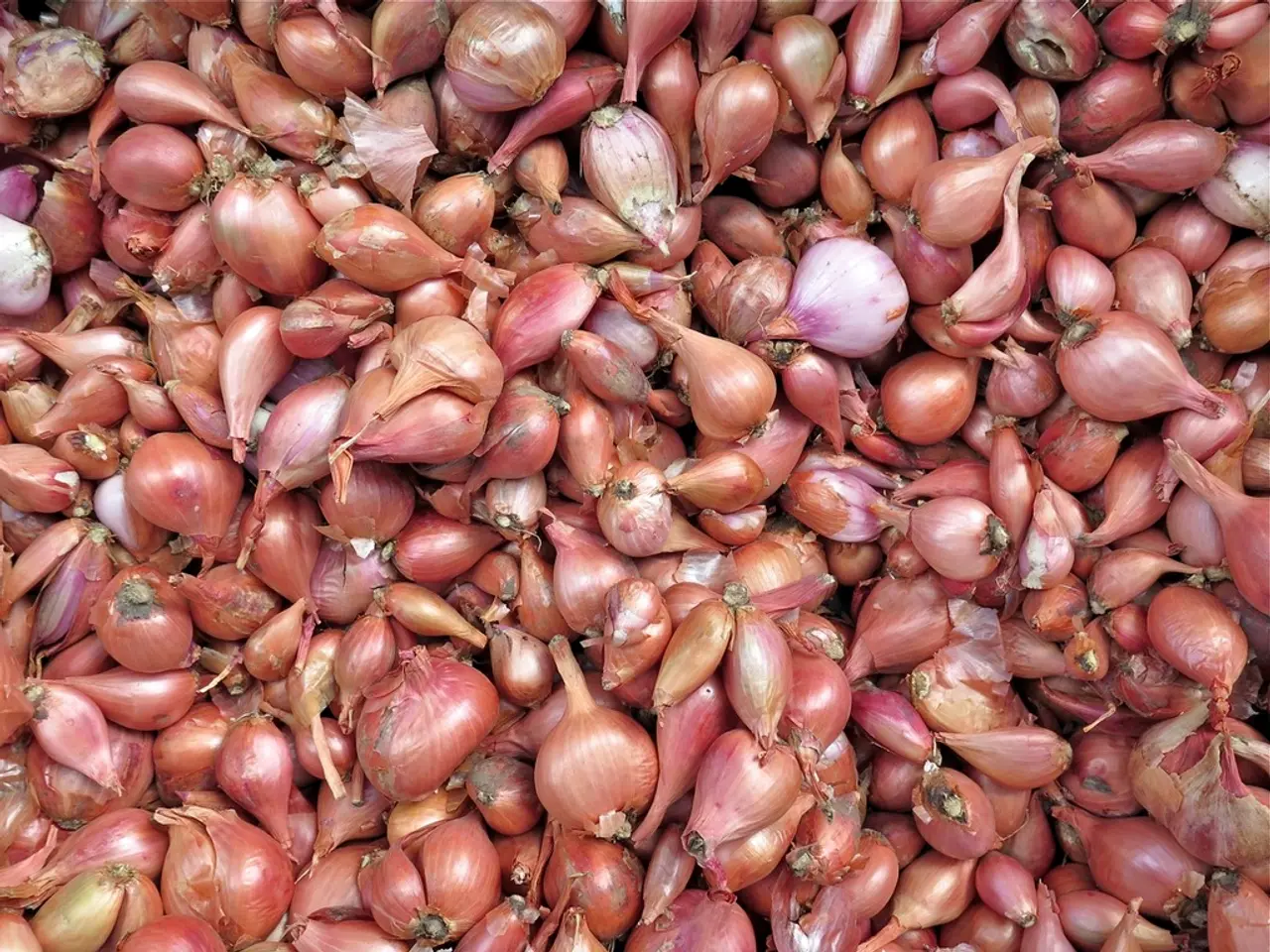Onion Harvesting Guide: Essential Information You Should Master
In the world of gardening, onions are a popular cool-season vegetable that have been cultivated by humans for over 4,000 years. Whether you're growing onions for their bulbs or for green onions, understanding the ideal harvest time is crucial for maximizing flavor and storage life.
Firstly, it's essential to know that the maturation time of onions can vary depending on the cultivar and whether sets are planted in autumn or spring. Seed packets often provide a guide, with 60-80 days for sets and 100-150 days from seed for full maturity.
The most reliable visual indicator for harvesting onions is when about one-third to three-quarters of the onion plants have their tops (foliage) naturally turning yellow and falling over (browning and flopping). This signifies that the bulbs have matured and are entering dormancy, typically occurring mid-summer or later. Overwintered onions tend to mature earlier (late May or early summer), while spring-planted ones are ready later.
Environmental conditions also play a significant role in determining the best time to harvest. Ideally, onions should be harvested under dry conditions (low humidity) to prevent microbial spoilage and enzymatic tissue breakdown that degrade flavor during storage. High humidity and temperature can accelerate spoilage post-harvest. Harvesting on a dry day with moderate temperature helps preserve flavor and storage quality.
After harvesting, curing onions properly (drying the bulbs with the tops for a week or more) is crucial for preserving flavor and storage life. This process reduces moisture and microbial growth. Curing takes at least two to three weeks, and once completed, the tops necks should be cut off to within one inch. The tops should be completely dry before storage.
Onions can provide a kitchen staple through the fall and winter if dried and stored correctly. Properly stored onions can keep for up to three months. Dried onions should be stored in a wire basket, crate, or nylon bag in a location with humidity levels between 65 and 70 percent.
It's important to note that any bulbs that have bolted, or formed flower stalks, should be pulled and used right away. For green onions, harvest them when they reach 6 inches (15 cm.) in height.
When it comes to planting onions, it's recommended to plant sets as soon as the garden can be worked. For onions that are to be used for green onions, it's best to create hills.
Lastly, learning how to harvest vegetables is important for every plant in the garden. Harvesting onions early in the morning when temperatures are not too hot ensures the best quality.
By following these guidelines, you'll be able to harvest onions at their peak flavor and enjoy them throughout the fall and winter months. Happy gardening!
References: [1] Gardener's Supply Company. (n.d.). How to grow onions: Tips for growing onions. Retrieved from https://www.gardeners.com/learn/how-to-grow-onions-tips-for-growing-onions
[2] National Gardening Association. (n.d.). Onion: Harvesting and curing. Retrieved from https://www.gardenguides.com/92787-onion-harvesting-curing.html
[3] University of California Agriculture and Natural Resources. (n.d.). Onion production in California. Retrieved from https://www.ipm.ucanr.edu/PMG/r146800611.html
[4] University of Illinois Extension. (n.d.). Onion production. Retrieved from https://web.extension.illinois.edu/cfivt/vegetables/onion.cfm
[5] University of Missouri Extension. (n.d.). Onions. Retrieved from https://extension2.missouri.edu/g6420
- A home-and-garden lifestyle enthusiast might find gardening onions, which have been cultivated for over 4,000 years, a rewarding endeavor, especially as they can provide a kitchen staple through the fall and winter if dried and stored correctly.
- To maintain the flavor and lifespan of garden-grown onions, it's essential to learn when to harvest them. This can be achieved by observing the plant's foliage turning yellow and falling over, a sign that the bulbs have matured and are completing their growth cycle, typically in mid-summer or later.




